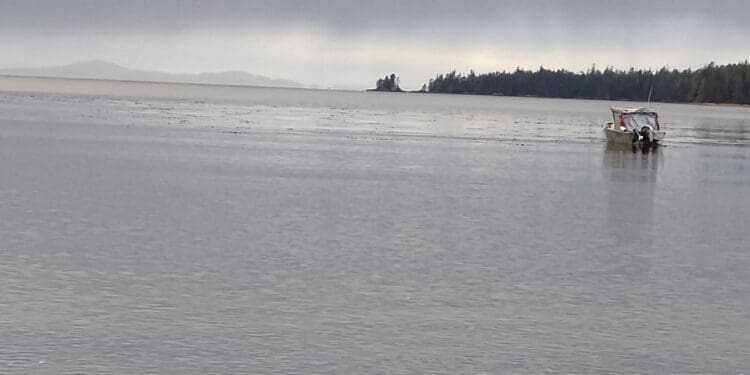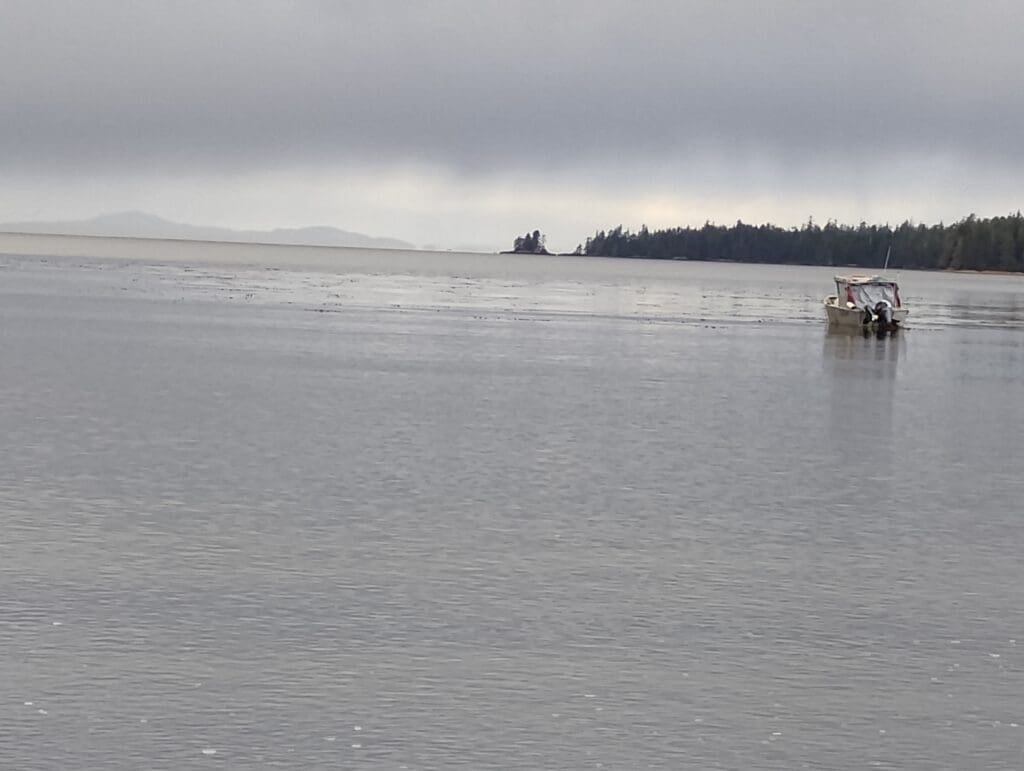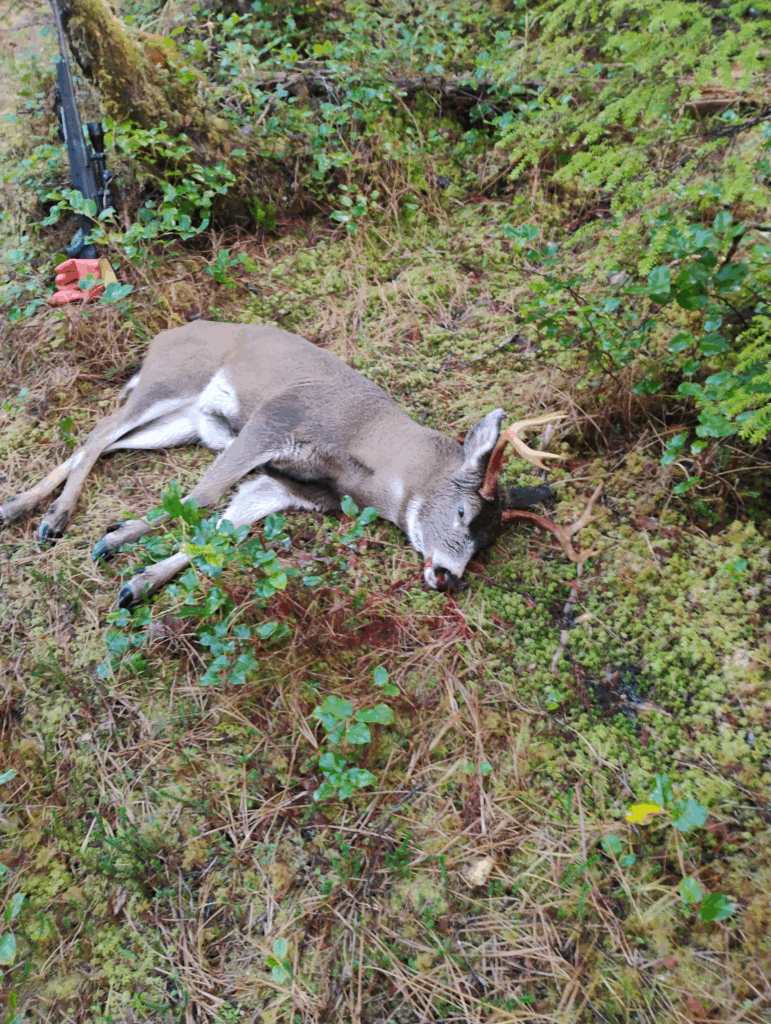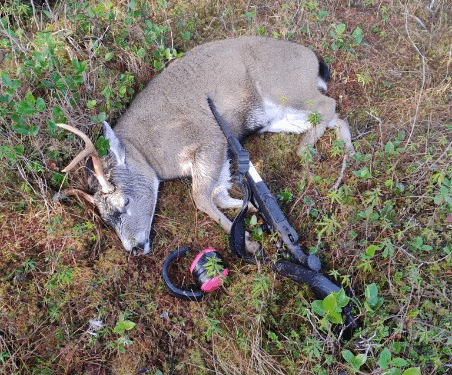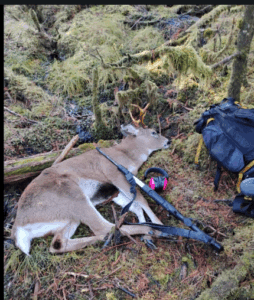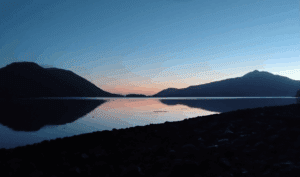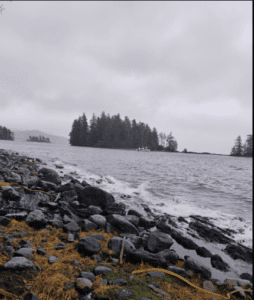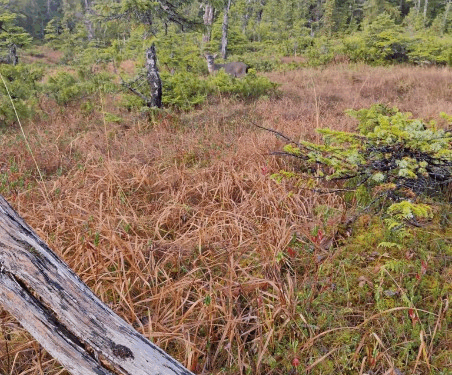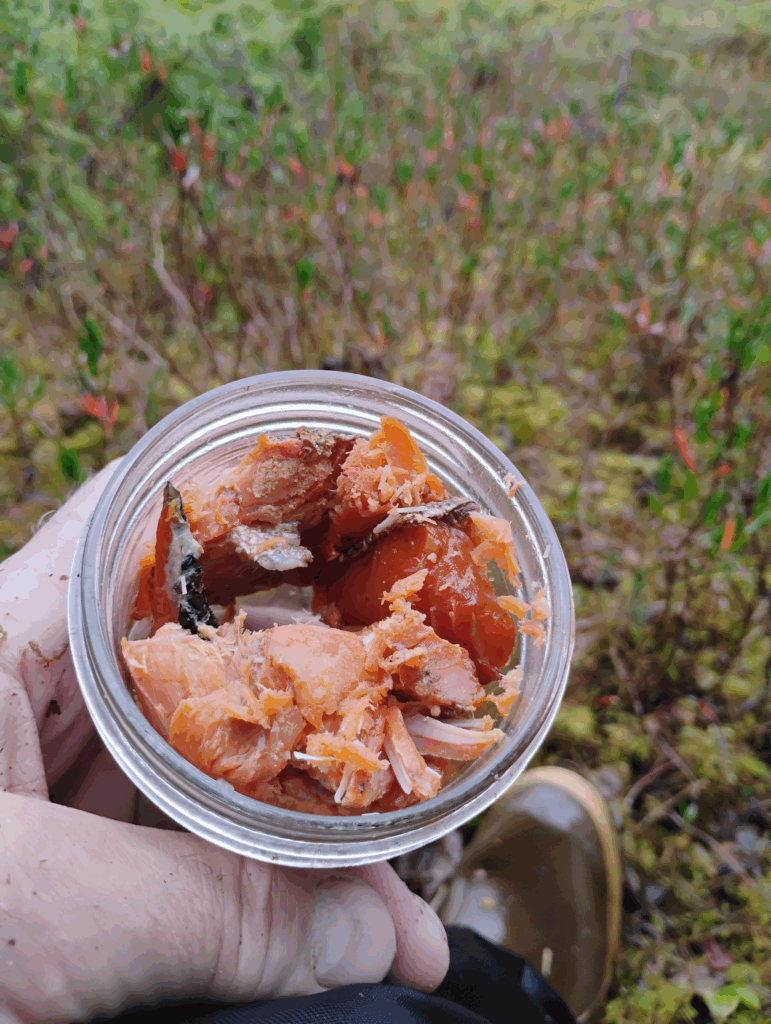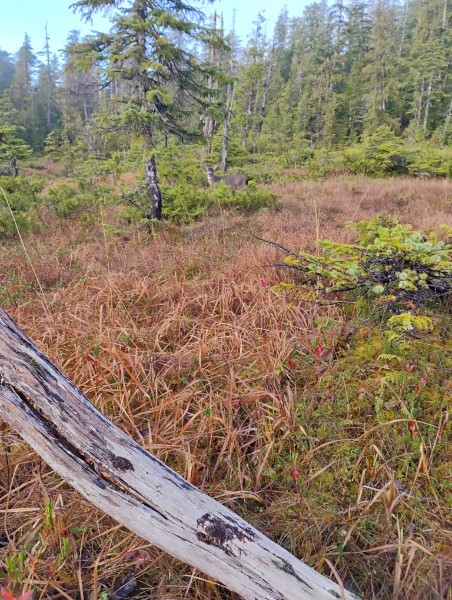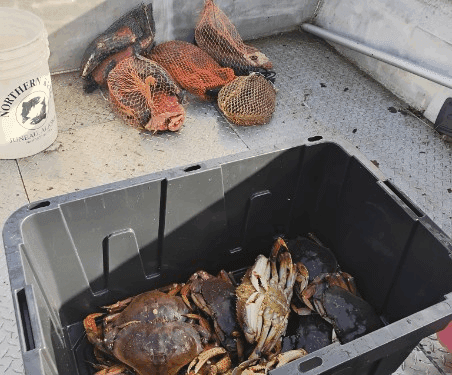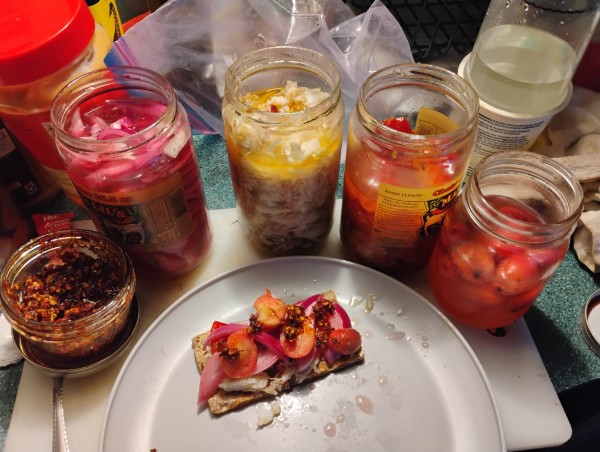Well, I thought things might go downhill this morning. I loaded the truck before dawn and was pulling up onto the road so I could turn around when the boat trailer came off the truck. Huh. I thought maybe the ball hitch popped off, even though I have a security pin in place for it. Nope. The pin holding the 3 way ball hitch into the receiver was gone. Not sure how that happened. Looked all over for it and could not find it. I was about to head to the shed for a bolt when I thought – look around the truck. Maybe you gotta spare. Yep! Right in the door pocket. I put the hitch back in the receiver, slid the blot through, and used a zip tie for a security pin as I didn’t see an extra one of those. I got hooked back up to the boat, loaded up, and drank coffee til I could see dawn coming before I headed the short drive to the launch ramp.
Not a single boat at the launch ramp. I launched the boat, and as I idled out, I realized I forgot to take out the shock abosorber under the engine. So, back to the dock and reach down and get it off. Then, off we go.
I talked friends at a birthday party last night, and they said 4 boats had been hunting one of the islands I’d thought about going to, so I decided to go to a nearby island to a spot I’ve not hunted yet this year, but a place where I’ve taken several deer in past. Charlie got a nice deer here, too. I arrived not too long after sunrise. I anchored the skiff in the kelp. I’ve had the anchor drag in the sandy bottom closer to the beach outside the kelp and then come back at the end of the day with the boat beached, more than once. I also used a 10 lb cannon ball tied to the anchor line just after the anchor chain to provide more drag. I launched the porta bote and rowed to shore.
Once on the beach, I offloaded my ditch bag, gun case, pack and cork boots. I pulled the skiff up above the tide line and tied it to a snag, then took my gun out of the guncase, unhooked the sling from the gun case, ran it through my life jacket and under a boat seat, rehooked it to the eye. I walked over to the bank and swapped out my regular xtra tuffs for the cork boots – which are xtra tuffs with golf spikes on the bottom. I stashed the regular boots under a log to keep them dry. Next, I got a compass bearing from my Onx app to my first hunting spot, and then pulled out the magnetic compass around my neck and lined it up with the bearing. I put my deer call round my neck, and off we go.
I was up and over the first hill, across the creek, and up the next little hill in no time. This used to take my maybe 30 minutes with my bad hip. Now it was more like 15 or less. As I crested the second hill, and about 20 yards from my first calling spot, I look to my left. And 10 yards away, all I see is a deer head and horns. I try to non-chalantly chamber a round and pull of the scope covers while watching the deer and the deer watching me. All that did was bring the deer in closer to me. He was waiting for me and now coming at me, perhaps to see if I was another buck he needed to run off, or a doe needing his services. What happened next I don’t exactly remember. I know I fired and missed. The big buck took a couple high bounds away from me. I whistled, and incredibly, the buck stopped and turned broadside. I squeezed the trigger. Nothing. I worked the bolt to discharge the spent shell and chamber a new one. The buck was still there. I aimed again and down he went. A perfect shot, right under the chin. He was gone before he hit the ground. No time for me to think. I blew the call again to see if any more bucks were closeby, and waited a short time to catch my breath. Then I walked over to the buck. Wow. A four point. I didn’t know that til now. I think only my second one ever. Surprisingly, the body wasn’t as big as the big fork horn buck I got on Prince of Wales Island proper several days ago. It was 920 am.
I marked the deer on my Onx, duffed my pack, and eased down another 20 yards to my calling log – my original destination this morning. I called there for 40 minutes. The first call, a doe came in silently behind me. She stopped for a short time, then kept going downhill behind me. She didn’t seem nervous. That was the only deer that came in. I think she was the girlfriend of the buck. The buck was pretty odiferous and definitely in the rut.
About 10 am, I got to work. There was a nice tree to hang the buck nearby. I got my homemade hoist out and tossed it over the tree branch. I dragged the buck up to the tree and was about to tie the antlers to the hoist when I realized – whoops. Need to remove the innards first. I took the buck back down hill a tad to a hummock I could put the middle of the deer on so the guts could gravity-fall downhill. First, I cut off the tarsal glands at the hind leg knees. I do this so I won’t grab it otherwise and get the stink of the gland on my hands and transfer it to the meat. And this boy was stinky. I got out the butt out tool to free up the intestine at the anus. Then removed the insides. I found the heart and removed that, removed the membrane around it, and put it on some clean forest duff to cool.
I’ve been having such a hard time trying to use my hoist. The hoist works great – halibut ganion is the ticket for being able to grip the line, and the stiff ganion line holds a knot well because it’s course, but it still slides through the pulleys great. The problem was pulling up the deer from the hind legs by using a stick between the hind legs to pull it up. The stick would either break or slip out and I’d have to start over. If I had the hide part way off, I’d also have some forest duff on the meat. As I get older, sometimes simple things I should have thought of don’t come to me so quick. And this was one of them. After the last deer fiasco, it finally struck me: hoist from the head, not the hind legs, you Dumb Ass!
Oh, did it work so much better. I lowered the lower pulley of the hoist to the ground, and tied on the antlers. Then up the deer went. I made a cut under the hide all the way around the neck, then pulled the deer up a bit higher. I removed the lower hock on each leg. Then made a cut under the hide from the neck all the way down the spine to the butt, then a cut from the neck down the belly to the sternum opening, then made cuts from the front knees to the belly cut, and from the hind knees to the tail. Now I started to work the hide from the neck downward. It took a bit to free up the hide around the neck, but once I got it going, it all was off in a few minutes. And the deer rotates so much better on the line from the head than the hind legs.
My old friend Pat in Kodiak showed me that as you work the hide away from the body, to cut holes with your knife in the hide right next to the meat, and then put your thumbs in the holes for leverage to pull the hide down further, then repeat. That was my first deer hunt. On Kodiak. Seems like last week. But it surely wasn’t. Pat and I are the last living friends from that trip.
Now for the real magic with the head up technique. I unfurled a full body deer game bag from my pack, and brought it up under the hind quarters of the deer. When I got to the front quarters, I tucked those into the bag, and pulled the bag as far up the neck as I could. Then I put my pack under the deer and got the deer started into the pack. I let the hoist down a bit and got more of the deer into the bag so now the bag would stay vertical on its own. I let the hoist down more, and now the whole deer was in the bag. I used my new “pelvic” saw to cut off the neck just below the bullet hole, and cinched the top of the pack lining over the deer. I untied the head from the hoist, and set it under some brush, near the hide, as a respectful final resting place. I’m not much on taking the antlers. A picture works for me and doesn’t add any weight to my pack.
Now it’s after 11 am. It hasn’t rained all day, and is just plain pleasant out. I’ve got the rest of the day to get to the beach. I take a compass reading on Onx, match it to the magnetic compass, and start down. This is where I’ve spent some unnecessary time getting back to the beach with a full load of deer on my back, wanderng off the route, and I didn’t want it to happen again. I checked my compass regularly and stayed on route. I did fall a couple times, got turtled, and had to get out of the pack, hoist the pack up on something about waist high or higher, and then shoulder it again. One time was because I sank down into some muck, couldn’t extract my foot in time to catch my balance, and tipped over. The second time I was moving downhill, and the big tree I was planning too much on to be my hand hold to steady me was rotted, my arm went right through the side of the tree and into the trunck, and down I went again. Otherwise, I actually made a straighter shot back to the punt than when I went in, and came out right where I needed to. It was 1230 pm.
I walked to the water’s edge and duffed my pack. Then sheathed my gun in its case, and took the gun case and ditch bag down and put them next to the pack. I changed out my boots, and dragged the punt down to the water, put in the gear, launched the boat, and it was an enjoyable row back to the boat. What a day.

